Ctek Onyx Handleiding
Ctek
Batterij-oplader
Onyx
Bekijk gratis de handleiding van Ctek Onyx (7 pagina’s), behorend tot de categorie Batterij-oplader. Deze gids werd als nuttig beoordeeld door 134 mensen en kreeg gemiddeld 4.9 sterren uit 67.5 reviews. Heb je een vraag over Ctek Onyx of wil je andere gebruikers van dit product iets vragen? Stel een vraag
Pagina 1/7

ONYX
Battery Charger
For lead-acid batteries 14–225Ah
User’s manual and guide to
professional battery charging for
starter and deep cycle batteries.
EN

INTRODUCTION
Congratulations on your purchase of your new professional ONYX Switch Mode Charger with
Pulse Maintenance, Float and Analysis. ONYX is a member of a family of professional chargers
from CTEK Sweden AB. It represents the state-of-the-art technology for battery charging. A
ONYX will prolong the lifetime of your battery. Read this user manual and follow the instructions
carefully before using the charger.
SAFETY
The charger is designed for lead-acid batteries 14–225Ah. Do not use the charger for any
other purpose.
Use safety glasses and turn your head away when connecting or disconnecting a battery.
Battery acid is corrosive. Rinse immediately with water if acid comes into contact with skin or
eyes. Seek medical advice.
Make sure that the cable is not being pinched or in contact with warm surfaces
or sharp edges.
While charging, a battery can emit explosive gases, so it is important to avoid sparks in the
immediate area.
Always provide for proper ventilation during charging.
Avoid covering the charger.
Make sure that the electrical cable does not come into contact with water.
Never charge a frozen battery.
Never charge a damaged battery.
Do not place the charger on the battery while charging.
The electrical connection must fulfil the national heavy current requirements.
Check the cabling in the charger before use. Make sure there are no cracks in the cabling or
in the protective covering. A charger with damaged cables may not be used.
Always check that the charger has gone over to maintenance charging mode before leaving
the charger unattended and connected for long periods. If the charger has not gone over
to maintenance charging within 3 days, this is an indication of a problem. In this case the
charger must be disconnected manually.
All batteries fail sooner or later. A battery that fails during charging is normally taken care of
by the chargers advanced control, but certain uncommon errors in the battery can still arise.
Don’t leave the battery charger unattended for a longer period of time.
Only mount the charger on a flat surface.
This equipment may not be used by children or by those who can not read and understand
the manual if they are not supervised by a responsible person who can guarantee that the
battery charger is being used in a safe manner. Store and use the battery charger out of the
reach of children. Make sure that children do not play with the battery charger.
BATTERY TYPES
The following recommendations should only be considered as guidelines. In the event of
uncertainty always refer to the battery manufacturer’s recommendations.
ONYX is suitable for charging all types of 12V lead-acid batteries: open batteries, MF, AGM and
most GEL-batteries. Battery sizes 14–225Ah.
•
•
•
•
•
•
•
•
•
•
•
•
•
•
•
•
•

CHARGING
Charging batteries mounted in a vehicle:
1. The power cord should be disconnected before connecting or disconnecting
the battery leads.
2. Identify the pole that is grounded (attached to the chassis). Ground is normally connected to
the negative terminal.
3. Charging a negatively grounded battery. Connect the red wire to the positive pole of the
battery and the black cable to the vehicle’s chassis. Be careful not to connect the black cable in
the vicinity of a fuel pipe or the battery.
4. Charging a positively grounded battery. Connect the black wire to the negative pole of the
battery and the red cable to the vehicle's chassis. Be careful not to connect the red cable in the
vicinity of a fuel pipe or the battery.
Charging of a battery not connected to a vehicle:
1. The power cord should be disconnected before connecting or disconnecting the
battery leads.
2. Connect the red wire to the positive pole of the battery and the black cable to the
negative pole.
Connecting the provided cables with eyelet terminals:
Make sure that the cable is not being pinched or in contact with warm surfaces or sharp edges.
When the cable is mounted on the battery, it should not be connected to the charger. Connect
the eyelet terminals to the battery's poles - the red cable to the positive pole and the black cable
to the negative pole. After this, the quick contact can be connected.
Reverse Polarity Protection
If the battery cables are connected incorrectly, the reverse polarity protection will make
sure that the charger and the battery are not damaged. In this case, the red warning
lamp (0) will be lit.
Start charging
1. Connect the power cord to the power outlet.
2. The lamp for Deep Discharged battery (1) will indicate if the battery voltage is low.
If lamp 1 blinks, this indicates that the battery is lightly sulfated. Read more under
”CHARGING PHASES”
3. Normal charging is indicated by the following lamps: Deep Discharged (1), Bulk Charge (2),
Absorption Charge (3) or Maintenance Charging (4). When the maintenance lamp is lit, the bat-
tery is fully charged. The charge will restart if the voltage drops. The charger can be connected
for months.
4. If the battery cables are connected incorrectly, the reverse polarity protection will make
sure that neither the charger nor the battery will be damaged. In this case, the red warning
lamp (0) will be lit.
5. If nothing happens. If none of the lamps come on this may be due to the connection to the
battery or chassis is poor or that the battery is faulty or has a too low terminal voltage. Another
cause may be a lack of voltage in the wall socket.
6. Charging can be interrupted at any time by disconnecting the power from the wall socket.
Always disconnect the power cable from the wall socket before removing the battery cables.
When you interrupt charging of a battery mounted in a vehicle, always disconnect the battery
cable from the chassis before removing the other battery cable.
Product specificaties
| Merk: | Ctek |
| Categorie: | Batterij-oplader |
| Model: | Onyx |
Heb je hulp nodig?
Als je hulp nodig hebt met Ctek Onyx stel dan hieronder een vraag en andere gebruikers zullen je antwoorden
Handleiding Batterij-oplader Ctek

25 April 2024

12 Juni 2023

4 Juni 2023

4 Juni 2023

15 Mei 2023

6 Mei 2023

6 Mei 2023

4 Mei 2023

1 Mei 2023

27 April 2023
Handleiding Batterij-oplader
- Silvercrest
- Elinchrom
- Stalco
- Shimano
- Monacor
- Technoline
- Ergotron
- DeWalt
- Perel
- Rothenberger
- Xtorm
- Twelve South
- Bebob
- Venom
- Speed-Link
Nieuwste handleidingen voor Batterij-oplader

29 Juli 2025
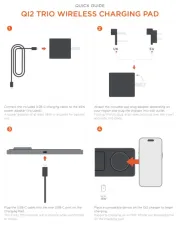
29 Juli 2025
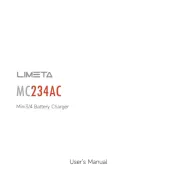
29 Juli 2025
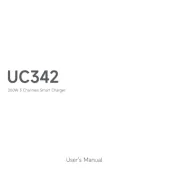
29 Juli 2025

29 Juli 2025
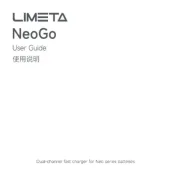
29 Juli 2025
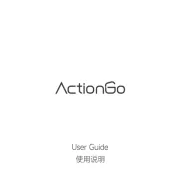
29 Juli 2025

29 Juli 2025
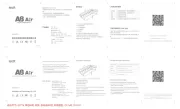
28 Juli 2025
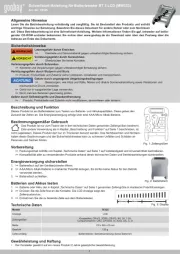
28 Juli 2025